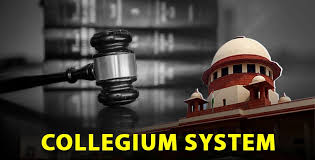Nevada Administrative Code Chapter 445B - Air Controls
Nevada Administrative Code (NAC)
Chapter 445B — Air Controls
Overview and Purpose
Chapter 445B regulates air quality control and pollution prevention within the State of Nevada.
The primary purpose is to protect public health, welfare, and the environment by controlling emissions of air pollutants.
The chapter implements and enforces standards consistent with the Clean Air Act and Nevada state laws.
Key Provisions
1. Air Quality Standards and Regulations
Establishes ambient air quality standards for pollutants such as particulate matter, sulfur dioxide, nitrogen oxides, carbon monoxide, ozone, and lead.
Defines maximum allowable concentrations of pollutants in the air to protect human health and the environment.
Adopts national ambient air quality standards (NAAQS) and may set more stringent state-specific standards.
2. Emission Limits and Permits
Regulates emissions from stationary sources (factories, power plants, refineries) and mobile sources (vehicles, engines).
Requires permits for construction, modification, and operation of facilities that emit air pollutants.
Permits specify limits on emissions, monitoring requirements, and control technologies to be implemented.
3. Control of Specific Pollutants
Addresses specific pollutants such as volatile organic compounds (VOCs), hazardous air pollutants (HAPs), and greenhouse gases.
Imposes requirements to reduce emissions of these pollutants through technological or operational controls.
4. Monitoring and Reporting
Facilities must monitor emissions regularly and maintain records.
Mandatory reporting of emissions data to the Nevada Division of Environmental Protection (NDEP).
Allows for inspections and enforcement actions based on monitoring results.
5. Control of Fugitive Dust and Odors
Sets rules to minimize fugitive dust emissions from construction, mining, and other activities.
Addresses nuisance odors that adversely affect the public.
6. Enforcement and Penalties
Provides authority to investigate violations, issue orders to comply, and assess penalties.
Penalties may include fines, suspension of permits, or other corrective measures.
7. Public Participation and Hearings
Public may be notified and allowed to participate in permitting decisions.
Hearings may be conducted for contested permits or enforcement actions.
8. Adoption of Federal Regulations
Incorporates relevant federal environmental regulations into state law by reference.
Ensures Nevada maintains compliance with federal air quality requirements.
Importance of Chapter 445B
Protects air quality for the health and welfare of Nevada’s residents.
Supports sustainable economic development by balancing environmental and industrial needs.
Provides a clear framework for industries to manage emissions responsibly.
Ensures Nevada meets its obligations under federal environmental laws.
Summary
| Aspect | Description |
|---|---|
| Purpose | Control and prevent air pollution to protect public health |
| Standards | Ambient air quality standards and emission limits |
| Permitting | Required for construction and operation of pollutant-emitting sources |
| Pollutants Controlled | Particulate matter, VOCs, HAPs, greenhouse gases, odors |
| Monitoring and Reporting | Emission monitoring and mandatory reporting |
| Enforcement | Inspections, compliance orders, fines, and penalties |
| Public Participation | Involvement in permit decisions and hearings |
| Federal Integration | Adoption of federal air quality regulations |


















0 comments